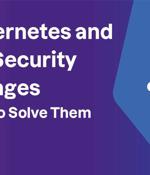Security News

A large-scale attack campaign discovered in the wild has been exploiting Kubernetes Role-Based Access Control to create backdoors and run cryptocurrency miners. The Israeli company, which dubbed the attack RBAC Buster, said it found 60 exposed K8s clusters that have been exploited by the threat actor behind this campaign.

These predictions underscore the rapidly evolving landscape of Kubernetes and cloud security, emphasizing the need for organizations to stay informed and adopt comprehensive security solutions to protect their digital assets. In response, Uptycs, the first unified CNAPP and XDR platform, released a whitepaper, "14 Kubernetes and Cloud Security Predictions for 2023 and How Uptycs Meets Them Head-On" addressing the most pressing challenges and trends in Kubernetes and cloud security for 2023.

In this Help Net Security video, Michael Peters, Principal Software Engineer at Red Hat, discusses how to implement a zero-trust system that uses workload identity across a service mesh in...

With this cryptojacking attack, the threat actor scans for Kubernetes instances with the authentication parameter set as "-anonymous-auth=true". As stated by CrowdStrike researchers Benjamin Grap and Manoj Ahuje, "a user with sufficient privileges who runs 'kubectl proxy' can unintentionally expose a secure Kubernetes API on the host where kubectl is running, which is a less obvious way to expose the secure Kubernetes cluster bypassing authentication."

Cybersecurity researchers have discovered the first-ever illicit cryptocurrency mining campaign used to mint Dero since the start of February 2023. "The novel Dero cryptojacking operation concentrates on locating Kubernetes clusters with anonymous access enabled on a Kubernetes API and listening on non-standard ports accessible from the internet," CrowdStrike said in a new report shared with The Hacker News.

The first known cryptojacking operation mining the Dero coin has been found targeting vulnerable Kubernetes container orchestrator infrastructure with exposed APIs. The researchers say the attacks start with the threat actors scanning exposed, vulnerable Kubernetes clusters with authentication set to -anonymous-auth=true, allowing anyone anonymous access to the Kubernetes API. After gaining access to the API, the threat actors will deploy a DaemonSet named "Proxy-api" that allows the attackers to engage the resources of all nodes in the cluster simultaneously and mine Dero using the available resources.

You want to deploy Kubernetes in an air-gapped environment, but after months of grueling work, you're still not up and running. Or maybe you're just embarking on the journey but have heard the horror stories of organizations trying to manage their Kubernetes deployment in air-gapped environments without success.

The Wazuh open source platform plays a critical role in monitoring Kubernetes and other components of an organization's infrastructure. Kubernetes is an open source container management solution that automates the deployment and scaling of containers and also manages the life cycle of containers.

The Kinsing malware is now actively breaching Kubernetes clusters by leveraging known weaknesses in container images and misconfigured, exposed PostgreSQL containers. "Recently, we identified a widespread campaign of Kinsing that targeted vulnerable versions of WebLogic servers," reads a report by Microsoft security researcher Sunders Bruskin.

The threat actors behind the Kinsing cryptojacking operation have been spotted exploiting misconfigured and exposed PostgreSQL servers to obtain initial access to Kubernetes environments. Kinsing has a storied history of targeting containerized environments, often leveraging misconfigured open Docker daemon API ports as well as abusing newly disclosed exploits to drop cryptocurrency mining software.